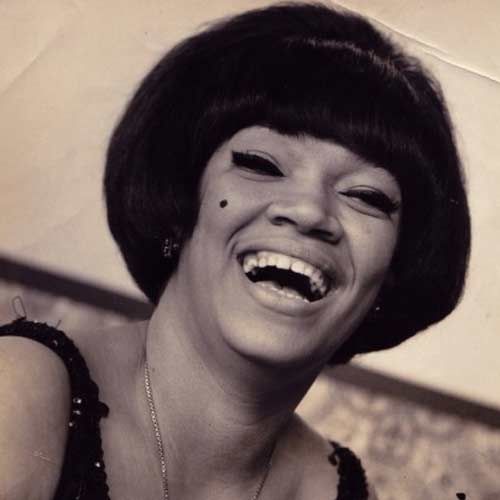|
|||||||||||||||||
La Lupe aka La Yiyiyi, was a Cuban-American singer of several musical genres: boleros, guarachas and latin soul in particular. She was famous for her histrionic manner on stage, her hands constantly moving, touching her face, renting her clothes, throwing her shoes, seemingly only just in control, and thriving on the emotions of the moment.
Born in the barrio of San Pedrito in Santiago de Cuba, La Lupe was a singer of extraordinary talent. Her father was a worker at the local Bacardi distillery and a major influence on her early life. Her introduction to fame was in 1954, on a radio program which invited fans to sing imitations of their favorite stars. Lupe bunked off school to sing a bolero of Olga Guillot’s, called Miénteme (Lie to me), and won the competition. The family moved to Havana in 1955, where she studied to become a teacher. Like Celia Cruz, she qualified as a schoolteacher before she became a professional singer.
Lupe married in 1958 and formed a musical trio with her husband Eulogio “Yoyo” Reyes and another female singer. This group, Los Tropicuba, broke up along with the marriage in 1960. She began to perform her own act at a small nightclub in Havana, La Red (The Net), which had a clientele of distinguished foreigners. She acquired a devoted following, which included Ernest Hemingway, Tennessee Williams, Jean Paul Satre, Simone de Beauvoir and Marlon Brando. She also performed regularly on radio. She released her first album, Con el Diablo en el cuerpo (With the Devil in my body) in 1960, for which RCA Victor gave her a gold disc. Her first television appearance on Cuban television, singing this number, which reportedly shocked some viewers.
In 1962 she found herself exiled to the United States. In New York City she performed at a cabaret named La Barraca, where she was discovered by Mongo Santamaria and started a new career, making more than 10 records in five years. She married a second time, to salsa musician Willie García, with whom she had a son. The marriage ended in divorce, after which she had a daughter by one of her lovers.
Lupe’s passionate performances covered the range of music: son montuno, bolero, boogaloo, venturing into other Caribbean styles like Dominican merengue, Puerto Rican bomba and plena. It was her recordings which brought Catalino Curet Alonso (El Tite) into prominence as a composer of tough-minded boleros in the salsa style.
She also began to write her own lyrics, and examples appear in most of her albums from the mid-1960s. In the 1960s she was the most acclaimed Latin singer in New York City due to her partnership with Tito Puente. She was the first Latin singer to sell out a concert at Madison Square Garden. She sang a wide variety of cover versions in either Spanish or accented English, including Yesterday, Dominique by The Singing Nun, Twist & Shout, Unchained Melody, Fever and America from West Side Story.
The quality of her performances became increasingly uneven. There were pesistent rumours of her drug addiction, and her life was “a real earthquake” according to close friends. She ended some of her on-stage engagements being treated with an oxygen mask. Although she may have been poorly managed by her record producers, Fania in particular, she managed and produced herself in mid-career, after she split with Tito Puente.
A devout follower of Santeria, she continued to practice her religion regardless of the influence, fortune, and fame she had acquired throughout the height of her career. Her record label, Fania Records, ended her contract in the late 1970s, perhaps simply because of falling sales.
She retired in 1980, and found herself destitute by the early 1980s. In 1984 she injured her spine; she initially used a wheelchair, then later a cane. An electrical fire made her homeless. After being “healed” at an evangelical Christian Crusade, La Lupe abandoned her Santeria roots and became a born-again Christian. In 1991, she gave a concert at La Sinagoga in New York, singing Christian songs.
She died from undisclosed causes at 55 years old. She was survived by her second husband, their son (Rene Camaro) and her daughter (Rainbow). She is interred in Saint Raymond’s Cemetery in the Bronx.
In the 1990s, interest in her music was re-sparked when Pedro Almodóvar included Puro teatro, one of her boleros of love and breakup in his film Women on the Verge of a Nervous Breakdown.
Her recording of La Virgen Lloraba was used in the film The Birdcage (1996). In 2002, New York City renamed East 140th Street in The Bronx as La Lupe Way in her memory.
Cuban-American writer Daína Chaviano pays homage to La Lupe in the novel The Island of Eternal Love (Riverhead-Penguin, 2008), where the singer appears in a cameo singing Puro teatro.






